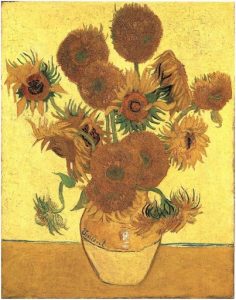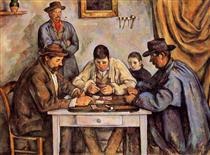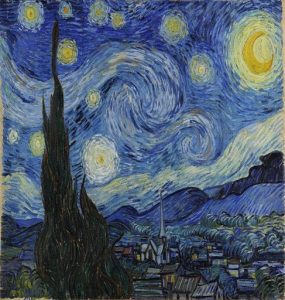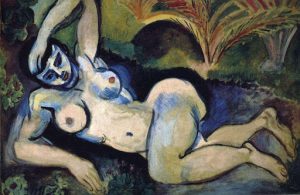
Fig 4- Sunflowers (1888)
In 1910, an English art critic Roger Fry invented the phrase “Post Impressionism” after a historical reality. It was a French movement that began in 1886 and ended in 1905. The style is regarded as one of the 19th century’s initial avant-garde trends. Post-impressionist artists moved away from naturalism and concentrated on examining perception of the eyes on the presentation of light’s changing nature. They also portray ordinary life in the streets, parks, cafés, and bars, using colour and shape in more expressive ways.
Post-Impressionist Painting Characteristics
The Post-Impressionists were a diverse group of artists that lacked a strong, uniting aesthetic. Each artist emphasized a different component of Impressionism. This artistic movement is best known for its characteristic brushstrokes, which are short and precise and reflect the quick changes during the period. Their vibrant colours, thick paint applications, and practical subject matter distinguished them. They were more prone to accentuate geometric forms, deform form for expressive effect, and employ unnatural or arbitrary hue and pure hues representing the radicalism lived within a society.
Artists of the Post-Impressionist Movement

Fig 1: Mont Sainte-Victoire, (1904)
Paul Cézanne (1839–1906) was a French painter and Post-Impressionist whose work laid the foundation for the twentieth-century transition from a nineteenth-century vision of artistic endeavor to a new and overwhelmingly different world art.
Figure and the landscape are recurring themes in Cézanne’s early work, with large groups of hulking figures depicted. Later, he became fascinated with working from direct observation, developing a light, airy painting style in the process. Nonetheless, a firm, almost architectural style of painting emerges in Cézanne’s older works.

Fig 2: The Card Players (1892)
To accomplish this, he structurally arranged anything he saw into simple geometric forms such as cylinders, spheres, cones, and colour planes. A tree trunk, for example, can be imagined as a cylinder, while an apple or orange can be a sphere. Basket of Apples (1895), and The Card Players (1892), are just a few of his well-known works.
Vincent van Gogh (1853–1890) enhanced the already brilliant hues of Impressionism by painting them thickly on the canvas (impasto).

Fig 3- Vincent van Gogh self portrait
His brisk brushstrokes conveyed a range of emotions. His early work, dating from the 1880s, had thick brushstrokes of darkly pigmented earth tones, but his style evolved to include dazzling colour and an aggressive surface with dynamic brushstrokes.

Fig 5: Starry Night (1890)
Van Gogh’s Self Portrait, Sunflowers (1888), and Starry Night (1890) are among his most recognized works.
Henri Matisse (1869-1954) is primarily the twentieth century’s best colourist. Cubism was the first art style that drew his attention but he ultimately abandoned it to use colour as the basis for expressive, ornate, and often massive paintings.

Fig 7- Blue Nudes (1907)
Still-life and nude remained preferred subjects throughout his career, and he made a significant contribution to collage with a sequence of paintings using cut-out colour forms at the end of his life.

Fig 6: Notre-Dame, une fin d’après-midi (1903)
Notre-Dame, une fin d’après-midi (1903), and Blue Nudes (1907) are some of his most recognized works.


Recent Comments